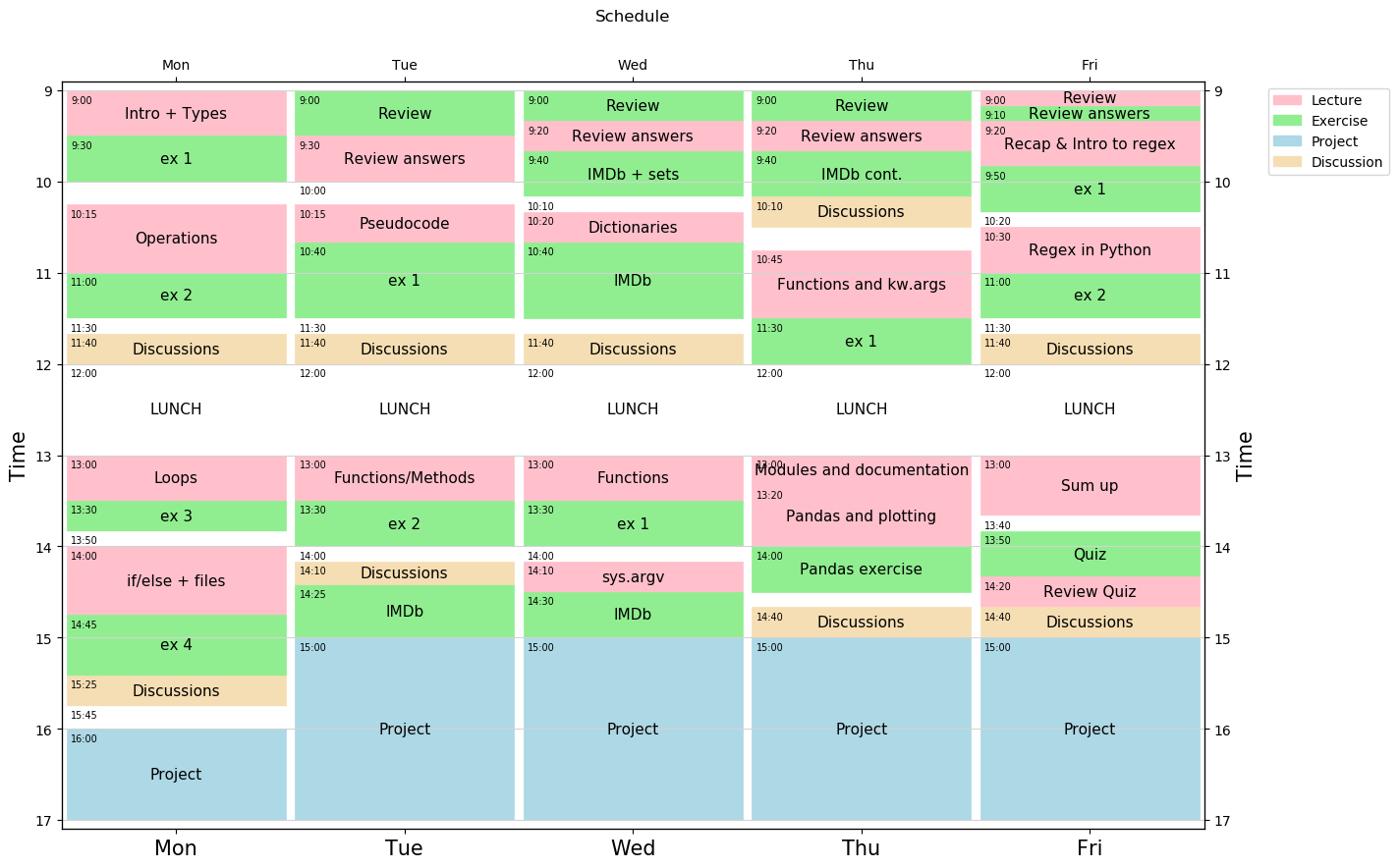Introduction to Python - with application to bioinformatics
This course provides a practical introduction to the writing of Python programs for the complete novice. Participants are lead through the core aspects of Python illustrated by a series of example programs. Upon completion of the course, attentive participants will be able to write simple Python programs from scratch and to customize more complex code to fit their needs.
- The course is suitable for complete beginners and assumes no prior programming experience (beyond the ability to use a text editor).
- A very basic knowledge of UNIX would be an advantage, such as navigating through folders and issuing commands at a shell prompt. We will not teach Unix in detail: Other course are available at SciLifeLab for it.
Before the first lecture, we require you to follow the steps detailed in the pre-course material.
18 - 22 October 2021
Online
Audience Course open to PhD students, postdocs, and other researchers. Note that priority is given to Swedish academia.
Fee This online training event has no fee. However, if you confirm your participation but do not do so(no-show) you will be invoiced 2000 SEK. Please note that NBIS cannot invoice individuals.
By participating you will be agreeing to the NBIS Code of Conduct.
 Covered topics
Covered topics
During this course, you will learn about:
- Core concepts about Python syntax: Data types, blocks and indentation, variable scoping, iteration, functions, methods and arguments
- Different ways to control program flow using loops and conditional tests
- Regular expressions and pattern matching
- Writing functions and best-practice ways of making them usable
- Reading from and writing to files
- Code packaging and Python libraries
- How to work with biological data using external libraries (if time allows).
 Learning outcomes
Learning outcomes
At the end of the course, students should be able to:
- Describe and apply basic concepts in Python, such as:
- Loops
- If/else statements
- Functions
- Reading/writing to files
- Being able to edit and run Python code
- Write file-processing Python programs that produce output to the terminal and/or external files
- Create stand-alone python programs to process biological data
- Know how to develop your skills in Python after the course (including debugging)
Learning objectives (ie goals for the teachers)
- Increase the student’s toolbelt for better quality and performance at work
- Make students understand that there is more to programming than only knowing the syntax of a language.
 Format
Format
This year the entire course will be given over Zoom. A link to the Zoom session will be emailed out to all participants prior to the course. The course will consist of:
- Presentations and demonstrations, given as short online-lectures.
- Practical exercises, where teaching assistants will be at hand helping you.
- A longer Project, which you work on throughout the week.
We do not require you to buy a companion book, as there are already lots of resources online. However, if you insist, we can suggest Programming Python, Learning Python, or Programming in Python 3. Such books can prove useful for your programming tasks, even after the course is over.
 Application
Application
This is a national course. The course is open for PhD students, postdocs, group leaders and core facility staff. We do accept application from other countries, but give priority to applicants from Swedish universities prior to applicants from industry and academics from other countries.
Please note that NBIS training events do not provide any formal university credits. The training content is estimated to correspond to a certain number of credits, however the estimated credits are just guidelines. If formal credits are crucial, the student needs to confer with the home department before submitting a course application in order to establish whether the course is valid for formal credits or not.
Entry requirements
No previous experience with programming is required. However, it is advantageous with a very basic knowledge of UNIX, such as navigating through folders and issuing commands at a shell prompt.
Due to teacher resources, the course can accommodate maximum of 25 participants. If we receive more applications, participants will be selected based on several criteria. Selection criteria include correct entry requirements, motivation to attend the course as well as gender and geographical balance.
 Schedule
Schedule

 Exercises
Exercises
All exercises can be found in here.
 Precourse material
Precourse material
Please read carefully the Pre-course material before the course start.
 Course staff
Course staff
Nina Norgren - course leader
Dimitris Bampalikis - course leader
Malin Klang - course leader
Jeanette Tångrot - course leader
Ingrid Hyltander - teaching assistant
Kostas Koumpouras - teaching assistant
Henrike Wiemker - teaching assistant
Ashfaq Ali - teaching assistant
Sebastian Kapell - teaching assistant
Claudio Mirabello - teaching assistant
 This course content is offered under a CC attribution share alike license. Content in this course can be considered under this license unless otherwise noted.
This course content is offered under a CC attribution share alike license. Content in this course can be considered under this license unless otherwise noted.